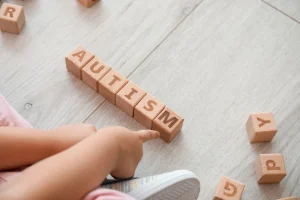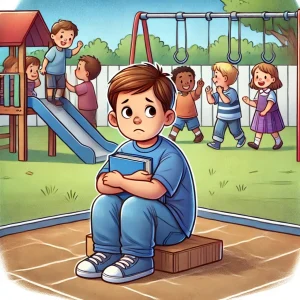Understanding Speech Impediments: Causes, Types & Treatment
By Rajini D
Last Updated: April 4, 2024
Welcome to “Exploring Various Speech Impediments: What You Need to Know.” This article is your gateway to understanding speech disorders that affect millions globally. If you’ve ever struggled with articulation or witnessed someone battle stuttering, you know these aren’t just communication barriers—they shape confidence, social interaction, and opportunities in life. Our comprehensive guide delves into the types and causes of speech impediments and their profound impacts. Perfect for parents, adults facing these challenges, or anyone eager to learn, we aim to empower and enlighten. Join us as we uncover the complexities of speech impediments, fostering knowledge and support.
Also Read: The Early Years of Speech and Language
Understanding Speech Impediments
In the world of communication, not all challenges are created equal. At the heart of many conversations about speaking difficulties lie two distinct terms: speech impediments and language disorders. Understanding the difference between these can illuminate the path to better support and solutions.
What Are Speech Impediments?
Simply put, speech impediments are obstacles that affect an individual’s ability to speak clearly and fluently. This can range from stuttering, where the flow of speech is interrupted, to articulation disorders, where the pronunciation of sounds is the challenge. Think of speech impediments as the mechanical issues in the vast machinery of communication – they directly impact how speech sounds are formed and delivered.
Also read: Understanding Speech Impediments: What Starts with ‘W’
How Do They Differ From Language Disorders?
Language disorders, on the other hand, delve deeper into the realm of communication. They relate to difficulties in understanding or using words in context, affecting both the expression and reception of language. While speech impediments disrupt the physical production of speech, language disorders are more about the content and comprehension of language itself.
The Impact of Untreated Speech Impediments
Leaving speech impediments unaddressed is not just a matter of mispronunciations or pauses in conversation. The ripple effects extend far into daily life and learning. Children may find it challenging to express their thoughts and feelings, potentially leading to frustration and social withdrawal. Adults, too, might face barriers in professional settings, where clear communication is often a cornerstone of success.
Moreover, the educational journey can become daunting. Learning to read, engage in classroom discussions, and participate in social activities hinges on effective communication. Speech impediments, if left untreated, can shadow an individual’s academic and social development, casting long-term effects on confidence and opportunities.
Know more: Understanding Language Disorders: Causes and Characteristics
Speech Impediments vs. Language Disorders
| Condition | Definition | Key Characteristics | Examples |
|---|---|---|---|
| Speech Impediments | Disorders that affect an individual’s ability to produce sounds correctly, leading to unclear speech. | – Difficulty pronouncing sounds – Interruptions in the flow of speech – Abnormal rhythm, pitch, or harshness in voice | – Stuttering – Lisping – Dysarthria |
| Language Disorders | Challenges in understanding and using words in context, affecting communication. | – Difficulty understanding others – Struggle to put words together in a sentence – Limited vocabulary – Inability to use language in a socially appropriate way | – Receptive Language Disorder – Expressive Language Disorder |
Primary Types of Speech Impediments
Diving into the world of speech impediments, it’s clear that these challenges come in various forms, each affecting individuals uniquely. Understanding these primary types is key to recognizing and seeking the right support. Here, we explore articulation disorders, fluency disorders, and voice disorders, offering insights into their characteristics and the impact they have on communication.
Articulation Disorders
Imagine trying to tell a story, but the words don’t quite roll off your tongue the way you intend. This is the reality for many facing articulation disorders. Such disorders involve difficulties in making sounds in syllables or saying words incorrectly to the point that listeners can’t understand what’s being said. For instance, someone with an articulation disorder might say “wabbit” instead of “rabbit” or struggle with the “r” sound, a challenge often observed in children but sometimes carried into adulthood. Lisping, characterized by difficulty with “s” and “z” sounds, is another common articulation issue, making “simple” sound more like “thimple.”
Read more: Articulation Disorder: A Comprehensive Guide to Clear Speech
Fluency Disorders
Fluency disorders disrupt the flow of speech, often making conversations a maze of repetitions, hesitations, and prolonged sounds. Stuttering is the most widely recognized fluency disorder, marked by involuntary repetitions of sounds, syllables, or words and prolongations of sounds. This can make smooth, flowing conversation challenging and often affects individuals’ willingness to speak up in groups or public settings due to fear of stigmatization or misunderstanding.
Know more: What is Stuttering: Types, Symptoms, and Causes
Voice Disorders
Voice disorders are all about the pitch, volume, tone, and quality of the voice. Conditions like dysarthria, where the muscles used for speech are weak or hard to control, lead to slurred or slow speech that can be hard to understand. Imagine having a conversation where your voice just doesn’t sound like you or struggling to make yourself heard. That’s the daily experience for those with voice disorders, which can stem from various causes, including neurological diseases, vocal cord damage, or misuse of the voice.
The Path Forward
Recognizing these primary types of speech impediments is just the beginning. At Wellness Hub, we believe in the power of understanding to pave the way for action. Whether it’s seeking speech therapy for a child who lisps, finding community support for fluency disorders, or exploring medical options for voice conditions, knowledge is your first step toward empowerment.
Common Causes and Symptoms of Speech Impediments
Common Causes
The roots of speech impediments often intertwine with genetic, developmental, and physical factors. Imagine a tree with branches extending into various aspects of communication, each branch representing a different cause or influence:
- Genetic Factors: Just like inheriting eye color or height from parents, speech impediments can also be a family legacy. If stuttering or articulation disorders run in the family, there’s a chance they might be passed down to the next generation.
- Developmental Delays: Sometimes, the developmental milestones related to speech and language take a bit longer to reach. These delays can be part of the broader spectrum of developmental challenges some children experience.
- Physical Conditions: Specific physical conditions, such as tongue-tie (ankyloglossia), where the tongue’s range of motion is restricted, can directly impact the ability to articulate sounds. Similarly, conditions like cleft palate present structural challenges to producing speech sounds.
Explore more: Understanding Speech Delay: Causes, Milestones, and Therapy
Symptoms by Speech Impediment Type
Identifying the signs of speech impediments early on can pave the way for timely intervention and support. Here’s a snapshot of symptoms associated with the primary types of speech impediments:
Articulation Disorders:
- Difficulty pronouncing certain sounds (e.g., saying “wabbit” instead of “rabbit”).
- Omitting sounds from words (e.g., “nana” for “banana”).
- Adding extra sounds to words (e.g., “pilillow” for “pillow”).
Fluency Disorders (Stuttering):
- Repetition of sounds, syllables, or words (e.g., “m-m-mom”).
- Prolonging sounds (e.g., “sssssun”).
- Blocks or interruptions in speech, where the sound doesn’t come out.
Voice Disorders:
- Hoarseness or a breathy voice that may sound strained.
- A pitch that is too high, too low, or monotonous.
- Unexpected pauses or breaks in the voice (can be a symptom of vocal cord dysfunction).
Each of these symptoms can be a beacon, signaling the need for further evaluation and support. Whether it’s a child struggling to articulate their thoughts clearly or an adult facing challenges in professional communication, understanding these symptoms is the first step toward finding solutions.
Symptoms of Speech Impediments
| Type of Impediment | Common Symptoms |
|---|---|
| Articulation Disorders | – Difficulty pronouncing certain sounds correctly (e.g., “r” sounds as “w”) – Omitting sounds in words (e.g., “nana” for “banana”) – Adding extra sounds to words (e.g., “pinanio” for “piano”) |
| Fluency Disorders | – Repetition of sounds, syllables, or words (e.g., “b-b-ball” for “ball”) – Prolonging sounds longer than normal (e.g., “ssssun”) – Blocks or pauses in speech where no sound is produced |
| Voice Disorders | – Unusual pitch (too high or too low) that is inappropriate for the individual’s age or gender – Hoarseness, breathiness, or a strained voice – Inconsistent voice quality, including breaks in the voice or fading volume |
How Speech Therapy Can Help
Speech therapy stands as a beacon of hope and progress for individuals grappling with speech impediments. This therapeutic approach does more than just address the symptoms; it dives deep into the root causes, offering strategies and exercises tailored to each person’s unique needs. It’s a journey of transformation, where challenges in communication become stepping stones to more effective expression and confidence.
The Power of Speech Therapy
Imagine having a tool that not only helps you speak more clearly but also enhances your ability to communicate your thoughts and emotions effectively. That’s the essence of speech therapy. It’s not just about correcting sounds; it’s about rebuilding the bridge of communication that connects us to the world around us. Through a combination of targeted exercises, practical applications, and compassionate support, speech therapy can unlock the full potential of one’s voice.
Personalized Approach to Therapy
One of the hallmarks of speech therapy is its personalized nature. Speech therapists, or speech-language pathologists, begin with a thorough evaluation to understand the specific impediments and challenges faced by an individual. This assessment forms the basis of a customized therapy plan designed to address the person’s unique needs. Whether it’s a child struggling with articulation disorders or an adult overcoming the aftermath of a stroke, speech therapy is tailored to meet them where they are, guiding them toward clearer communication.
Finding the Right Support
Embarking on a journey to overcome speech impediments is a significant step toward enhancing one’s quality of life. Knowing how and where to seek professional help can make all the difference. Speech therapy, a cornerstone of support for those with speech and language difficulties, offers a pathway to clearer communication. Here’s what to expect and how to find the right help.
Seeking Professional Help
Finding a speech therapist begins with understanding your needs or the needs of your loved one. A speech-language pathologist (SLP) specializes in diagnosing and treating communication and swallowing disorders. The first session typically involves an assessment to gauge the nature and extent of the speech impediment. This may include conversation tests, standardized assessments, and, in some cases, physical examinations to understand the mechanics of speech production.
What to Expect From Speech Therapy Sessions
Speech therapy sessions are as unique as the individuals attending them. They may involve:
- Exercises to strengthen the muscles used in speech.
- Practice sessions for articulation of sounds and words.
- Language activities to enhance understanding and use of language.
- Use of technology to support learning and practice.
- Guidance and strategies for home practice and real-world communication.
These sessions are designed to be interactive and engaging, promoting a positive and supportive environment for growth and learning.
Conclusion
In wrapping up our discussion on speech impediments, we’ve delved into the complexities of various conditions that affect communication. Recognizing, understanding, and seeking timely intervention for speech impediments are critical steps toward improvement. Speech therapy, tailored to individual needs, can significantly enhance one’s ability to communicate, boosting confidence and overall quality of life.
For those facing these challenges, remember that support and resources are accessible. WellnessHub stands ready to connect you with experienced professionals dedicated to helping you or your loved ones overcome speech impediments. Embrace the journey toward clearer communication because every voice deserves to be heard.
Frequently Asked Questions:
1. What are common types of speech impediments?
Common speech impediments include articulation disorders, where individuals have difficulty pronouncing certain sounds; fluency disorders, like stuttering, affecting the flow of speech; and voice disorders, which impact the pitch, volume, or quality of the voice.
2. How can I tell if my child has a speech impediment?
Signs of a speech impediment in children include difficulty pronouncing words correctly, hesitating or stuttering when speaking, speaking in a voice that’s unusually hoarse or nasal, or struggling to use speech sounds appropriate for their age. Early consultation with a speech-language pathologist is recommended if you notice these signs.
3. Can adults develop speech impediments?
Yes, adults can develop speech impediments due to various reasons, including neurological conditions, trauma, stroke, or voice strain. It’s important for adults experiencing changes in their speech or voice to seek evaluation from a speech-language pathologist.
4. Is stuttering the only fluency disorder?
While stuttering is the most well-known fluency disorder, others include cluttering (speaking rapidly and merging words together) and spasmodic dysphonia (a voice disorder causing involuntary spasms in the voice muscles).
5. How does speech therapy help with speech impediments?
Speech therapy helps by providing personalized strategies and exercises aimed at improving the specific aspects of speech that an individual struggles with. Through consistent practice and professional guidance, speech therapy can significantly enhance one’s ability to communicate effectively.
6. Can speech impediments be completely cured?
The outcome of treatment for speech impediments varies depending on the type, severity, and cause of the impediment, as well as the individual’s engagement with therapy. Many people experience significant improvements, and in some cases, speech impediments can be resolved completely.
7. How can I find a qualified speech therapist?
You can find qualified speech therapists through referrals from healthcare providers and educational institutions or by searching reputable platforms like WellnessHub, which connects individuals with experienced professionals in speech therapy.
8. Are there any resources available for people with speech impediments?
Yes, there are many resources available, including therapy services, support groups, online forums, and educational materials. Platforms like WellnessHub offer access to a wide range of services and information designed to support individuals with speech impediments.
9. What role do genetics play in speech impediments?
Genetics can play a significant role in certain types of speech impediments, such as stuttering. Research shows that stuttering can run in families, indicating a genetic component. However, not all speech impediments are inherited; many result from physical conditions, developmental delays, or environmental factors.
10. How long does it typically take to see improvement with speech therapy?
The time it takes to see improvement from speech therapy varies widely among individuals, depending on factors such as the type and severity of the speech impediment, the individual’s age, and their consistency in attending therapy sessions and practicing exercises. Some may notice improvements within a few months, while others might take longer to achieve significant progress. A speech-language pathologist can provide a more personalized timeline based on individual assessments.
About the Author:
Rajini Darugupally
M.Sc., Speech-Language Pathologist (9+ years of experience)
Rajini is a passionate and dedicated Speech-Language Pathologist with over 9+ years of experience, specializing in both developmental speech and language disorders in children and rehabilitation in adults. Driven by a desire to empower each individual to find their voice, Rajini brings a wealth of experience and a warm, genuine approach to therapy.
Currently, at Wellness Hub, she thrives in a team environment that values innovation, compassion, and achieving results for their clients.
Connect with Rajini to learn more about how she can help you or your loved one find their voice.
Book your Free Consultation Today
Parent/Caregiver Info:
Client’s Details:
* Error Message









